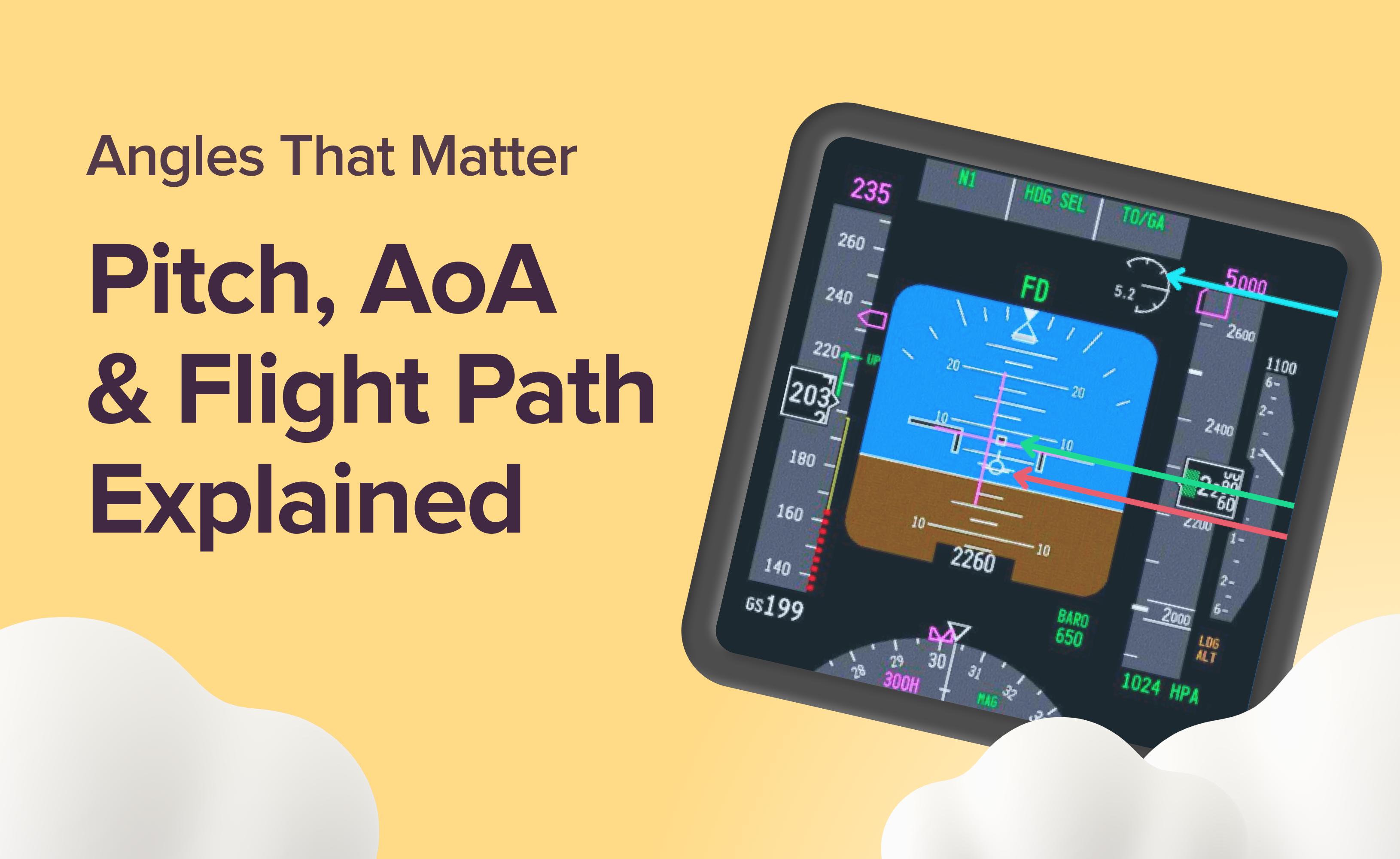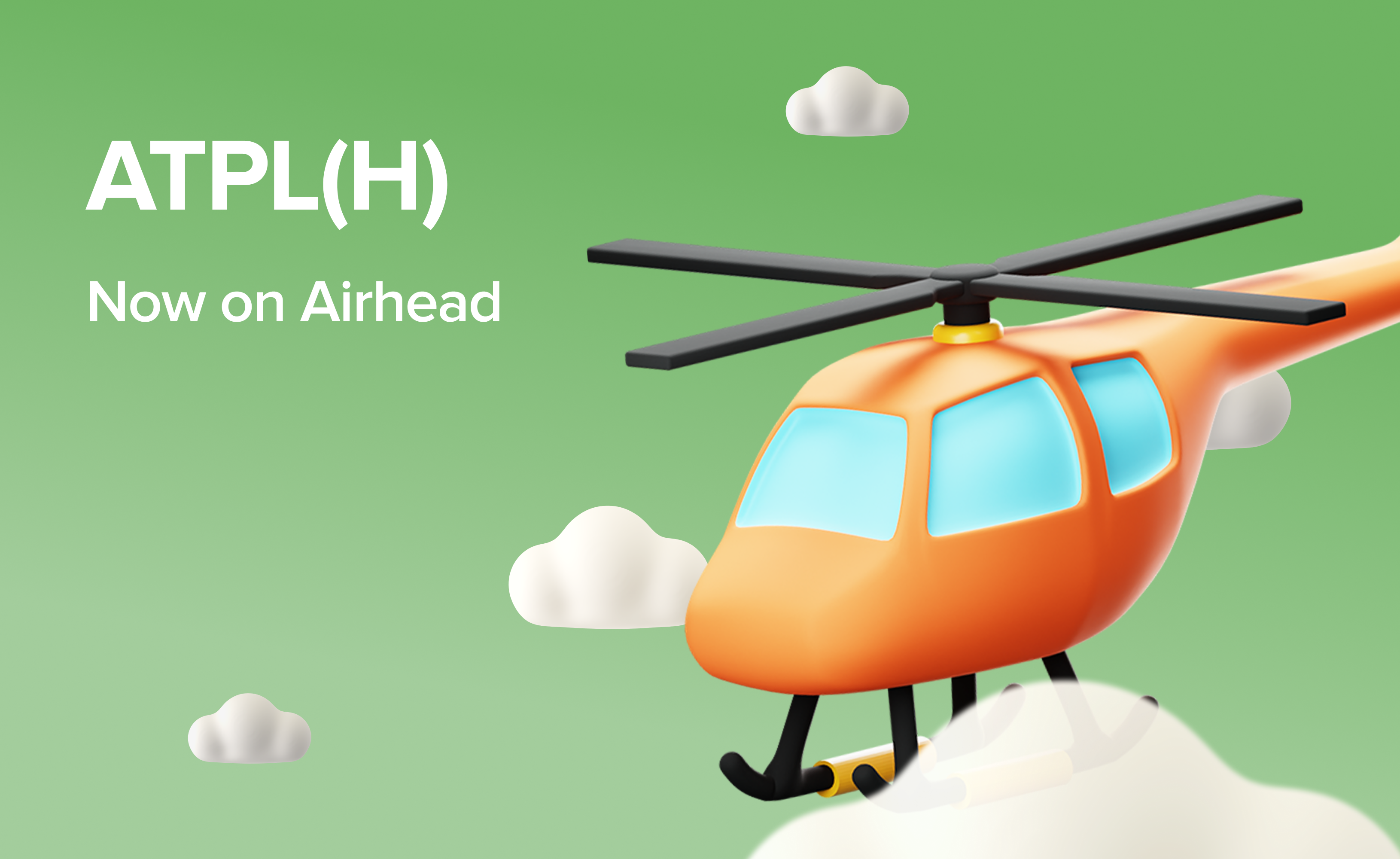From Dream to Machine: The Brief History of Helicopters
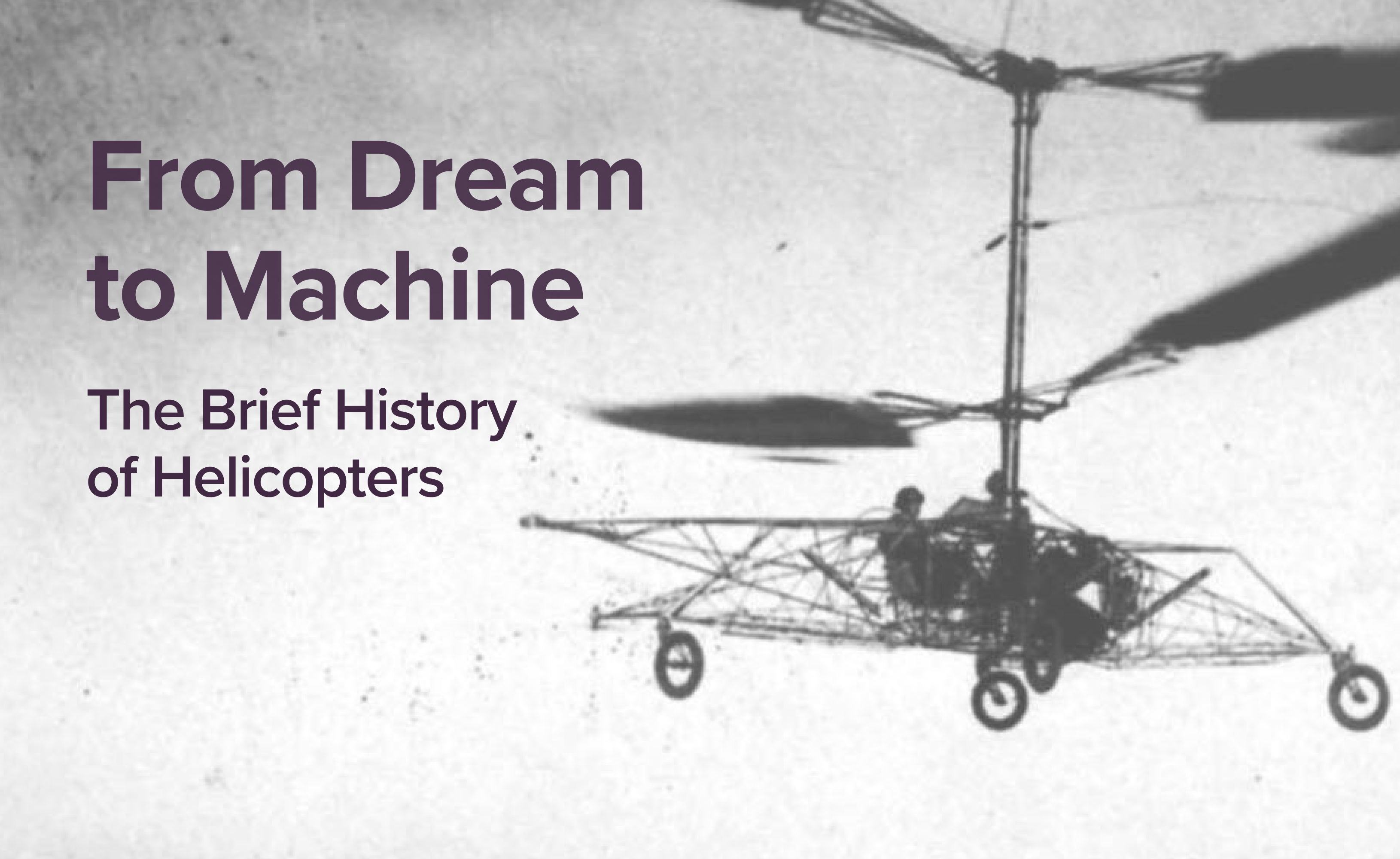
The helicopter, an extraordinary flying machine, can take-off and land vertically, hover in mid-air, and manoeuvre in any direction. This versatility makes it an irreplaceable tool in aviation, the military, emergency services, and many other fields. The history of helicopter development is a fascinating journey, marked by the contributions of numerous inventors and engineers.
This article explores the key milestones in the creation and advancement of helicopters, providing a detailed narrative of this sophisticated transport's evolution. From early dreams to the machines that grace the skies today, this historical overview will not only ignite your passion for helicopters but also offer valuable context for your ATPL(H) studies.
Leonardo da Vinci's Vision

The earliest known concept of a vertical flight machine dates back to the 15th century. The Italian polymath Leonardo da Vinci, renowned for his contributions to art and science, designed an aerial screw. It was an ambitious concept ahead of its time. The apparatus envisioned in his sketches, consisted of a helical rotor that, theoretically, could lift the screw into the air through rotational motion.
Da Vinci depicted a structure made of reeds, linen, and wire, which was supposed to be operated by four men turning cranks to spin the rotor. While da Vinci's designs remained on paper, they laid the conceptual groundwork for future vertical flight endeavours.
Mikhail Lomonosov's Aerodynamic Machine

In the 18th century, the Russian scientist Mikhail Lomonosov proposed a machine for atmospheric research. Lomonosov came up with two counter-rotating rotors powered by wound clock springs. Intended to lift meteorological instruments, this device demonstrated the potential of rotorcraft for scientific exploration. However, it was limited by the power of its springs, highlighting the need for a more potent engine.
Lomonosov's innovation was primarily driven by his interest in understanding the upper atmosphere. Although his aerodynamic machine could only lift small weights, it underscored the importance of finding a reliable power source for sustained flight. His work was a precursor to more advanced designs that would follow in the subsequent centuries.
Launoy and Bienvenue Feathered Helicopter
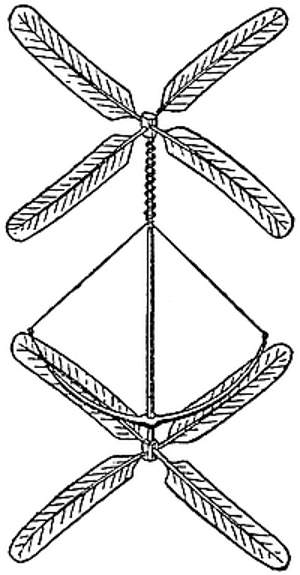
Inspired by the graceful flight of birds, French inventors Launoy and Bienvenue presented a revolutionary model to the Paris Academy of Sciences in 1784. This early design, aptly named a "helicopter," featured a fascinating propulsion system: two coaxial, feathered rotors driven by the stored energy of an elastically twisted bowstring. These rotors, each roughly a foot in diameter, mimicked the flapping wings of birds.
While their size limited lifting capacity to lightweight objects, the Launoy and Bienvenue helicopter achieved a significant feat – it demonstrated the viability of using rotating wings, or "coaxial screws" as they were technically called, to generate lift for vertical flight. This pioneering concept would serve as a springboard for future helicopter development.
The Breguet Brothers' Gyroplane
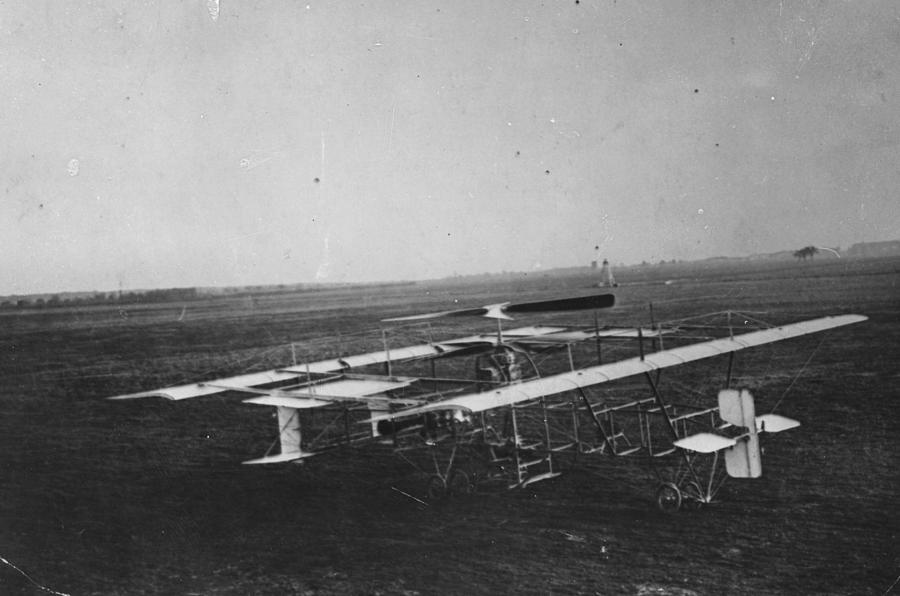
On 24 August 1907, French brothers Louis and Jacques Breguet achieved the first recorded vertical flight with their gyroplane. Although tethered and lacking a pilot, their machine lifted off the ground, marking the beginning of practical helicopter experimentation. The Breguet gyroplane featured four large rotors and a 45 horsepower engine, demonstrating the potential of powered vertical lift.
The Breguet brothers' machine, known as the Gyroplane No.1, weighed approximately 578 kg and could achieve lift thanks to its powerful engine. Despite its limitations in control and stability, this achievement was a crucial milestone, proving that vertical lift could be achieved with powered rotors.
Paul Cornu's First Manned Flight

Just a few months after Launoy and Bienvenue's pioneering work, French bicycle mechanic Paul Cornu etched his name in aviation history on November 13, 1907. Cornu achieved the first manned helicopter flight, lifting himself roughly half a meter off the ground for 20 seconds. His machine, a rudimentary but ingenious design, featured two large counter-rotating rotors powered by a robust 24-horsepower engine.
While certainly unstable and limited in control, Cornu's flight marked a pivotal moment in vertical aviation. It demonstrated the feasibility of human-operated vertical lift technology, proving that powered rotary wings could propel a pilot skyward.
However, Cornu's machine also highlighted the challenges that remained – namely, achieving the stability and control necessary for sustained and practical flight. His work served as a stepping stone, inspiring future inventors to refine helicopter design and tackle these critical limitations.
Boris Yuriev's Skew Automaton
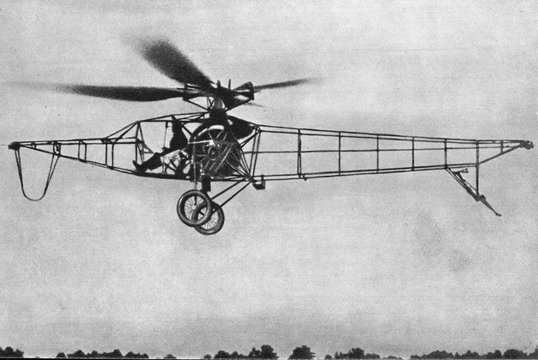
In 1911, Russian engineer Boris Yuriev introduced the concept of the skew automaton, a crucial advancement in helicopter control. Yuriev's mechanism allowed for the cyclic variation of rotor blade pitch, enabling more precise control of the aircraft's movement. Such innovation addressed the challenge of controlling horizontal flight and directional rigidity.
This cyclic pitch control enabled pilots to manage the helicopter's direction and stability more effectively, making it possible to perform complex manoeuvres. Yuriev's invention remains a fundamental component of modern helicopter design.
Raul Pescara's Coaxial Rotor Design
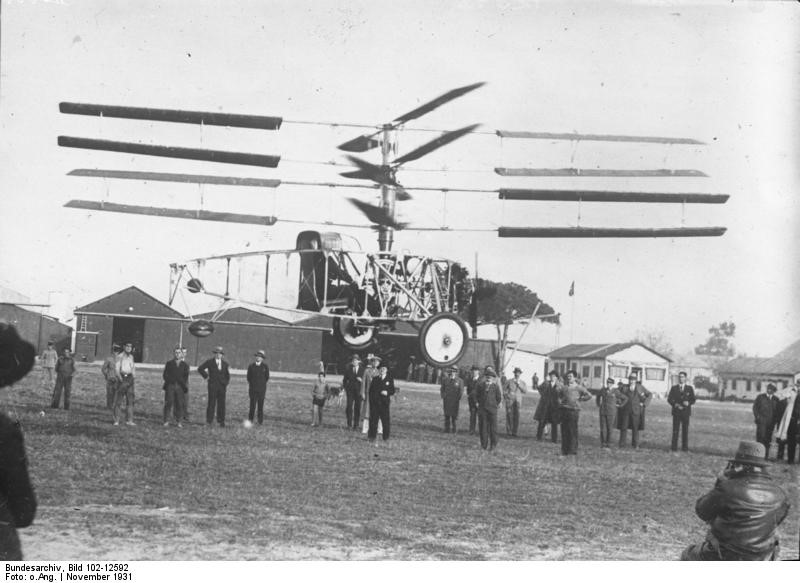
In the 1920s, Argentine inventor Raul Pescara developed a series of helicopters featuring coaxial rotors, which rotate in opposite directions to cancel out each other's torque. Pescara's design improved stability and control, leading to several world records for altitude and flight duration.
His coaxial rotor system eliminated the need for a tail rotor, simplifying the helicopter's design and reducing mechanical complexity.
Pescara's helicopters set numerous records, including altitude and endurance, showcasing the practical benefits of the coaxial configuration.
George Botezat's Quad-rotor
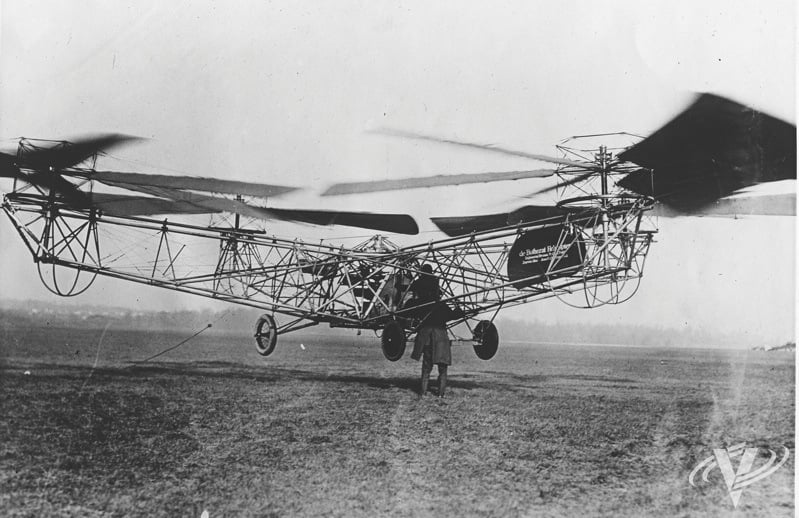
Around the same time, Russian-American engineer George Botezat, supported by the US Army Air Service, developed a quadrotor helicopter. The machine featured four large rotors and a system for adjusting their pitch to control flight. Although bulky and complex, the quadrotor demonstrated the feasibility of multi-rotor designs for improved control and stability.
Botezat's quadrotor, known as the Botezat Helicopter, was a significant engineering achievement. It was one of the first rotorcraft to incorporate variable-pitch propellers. Despite its size and weight, the quad-rotor aircraft proved that multiple rotors could be used to achieve stable vertical flight, a concept that would later be refined in modern drones and UAVs.
Corradino D'Ascanio's World Records

In 1930, Italian engineer Corradino D'Ascanio set the first officially recorded world record for helicopter flight. His coaxial helicopter climbed to 18 metres, remained airborne for 8 minutes and 45 seconds, and covered a distance of 1,078 metres.
The helicopter, known as the D'AT3, was a remarkable machine that incorporated innovative features such as a lightweight frame and a powerful engine. His success in setting world records highlighted the progress being made in helicopter technology and the potential for these machines to perform practical tasks.
D'Ascanio's achievements demonstrated the potential of helicopters for sustained flight and practical applications.
Henrich Focke's Innovations
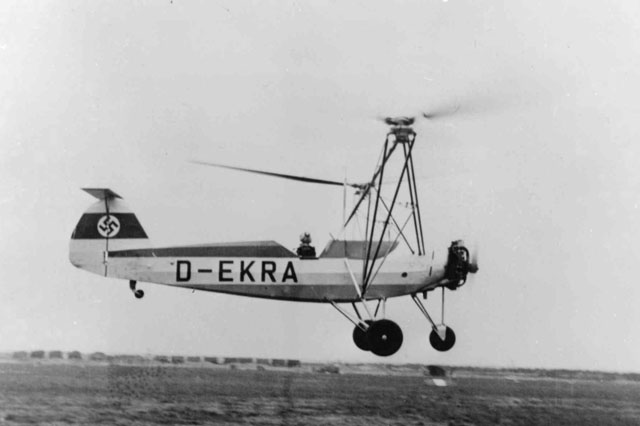
In 1936, German engineer Heinrich Focke significantly advanced helicopter development with his Focke-Wulf Fw 61, also known as the Focke-Achgelis Fa 61. This innovative design achieved remarkable performance, featuring two lateral rotors mounted on outriggers.
The Fw 61, piloted by Ewald Rohlfs on its maiden flight on June 26, 1936, shattered altitude and distance records, becoming the first practical helicopter to demonstrate controlled flight over significant distances. Focke's use of side-mounted rotors and advanced aerodynamics resulted in new heights in helicopter performance, highlighting the importance of rotor configuration and efficient design for future advancements.
Igor Sikorsky's Stable Helicopter

The first practical and stable helicopter was developed by American inventor Igor Sikorsky. His VS-300, which first flew in 1939, featured a single main rotor and a tail rotor for stability. This innovation allowed for stable and controlled flight, making the helicopter a viable aircraft for the first time. Sikorsky's design laid the foundation for modern helicopter ergonomics. The VS-300's success demonstrated the feasibility of helicopters for various practical applications, including military and civilian use.
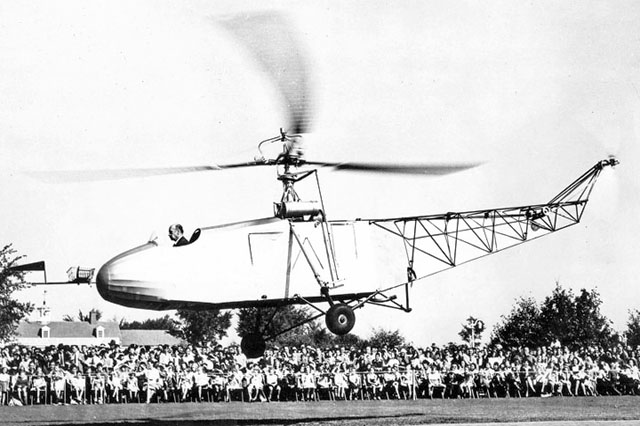
Sikorsky's work did not stop with the VS-300; he continued to refine his designs, leading to the development of more advanced models like the R-4, the first mass-produced helicopter.
Sikorsky's continued innovations led to the development of more advanced models, such as the S-55, which was used for troop transport and medical evacuation, and the S-58, which offered improved performance and payload capacity.
The Introduction of Jet Turbine Engines

The 1950s and 1960s saw the introduction of jet turbine engines in helicopters. The Bell UH-1 Iroquois, commonly known as the “Huey,” became an iconic symbol of the Vietnam War, demonstrating the utility of helicopters in combat and medical evacuation. Turbine engines allowed for greater power and efficiency, expanding the capabilities of helicopters.
The Bell UH-1 Iroquois was a revolutionary design that transformed helicopter operations. Its turbine engine provided more power and reliability than piston engines, enabling the Huey to carry heavier loads and perform more demanding missions. The Huey's success in Vietnam highlighted the critical role helicopters could play in modern warfare, and it became a symbol of American military aviation.
Taking Flight to the Future
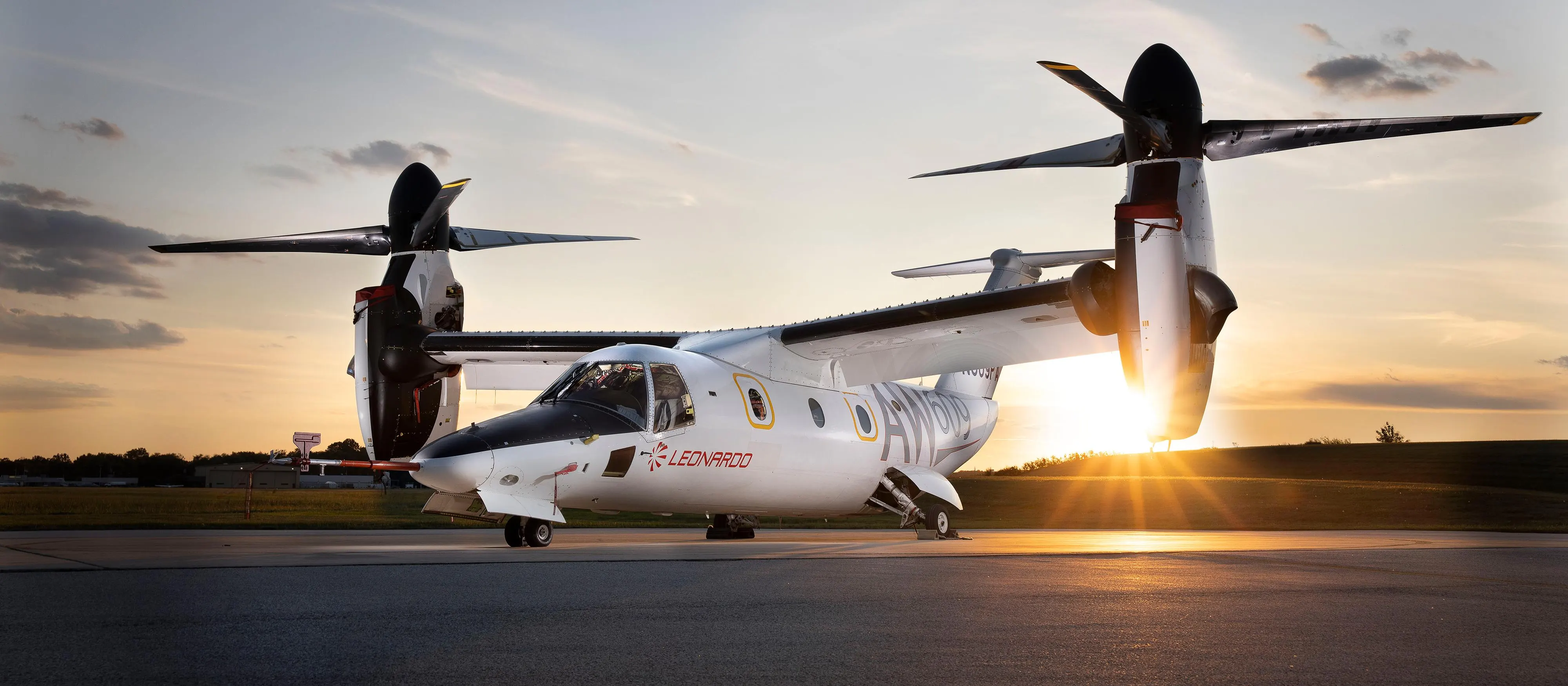
Helicopters are heading into a future filled with innovation. Modern designs incorporate fly-by-wire controls, advanced avionics, and even autonomous flight capabilities. Electric and hybrid engines promise cleaner skies and quieter operation.
Beyond traditional helicopters, exciting concepts like tiltrotors and compound helicopters combine vertical lift with the speed and range of aeroplanes.
One of the most anticipated advancements is Urban Air Mobility ((UAM, for short)). Imagine electric flying taxis! These next-generation helicopters aim to reduce traffic congestion and offer a convenient, eco-friendly way to travel within cities.
The future of flight is taking off, and helicopters are leading the way!

The helicopter's journey, from dream (sketched by da Vinci) to reality (complex missions flown today), showcases humanity's relentless pursuit of conquering vertical flight. Every innovation, from fly-by-wire to electric engines, has propelled us further, making helicopters more capable and reliable workhorses in the sky.







